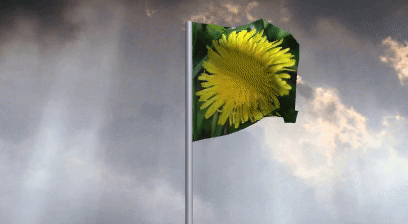I had a wild time, alright! I could have died, if I didn't know what I was getting into. A primitive melange a trois is more my style, but the Steemit Iron Chef contest is pushing me to try to be more refined. That may be a losing battle, but I still had fun! Come on into my post and watch!
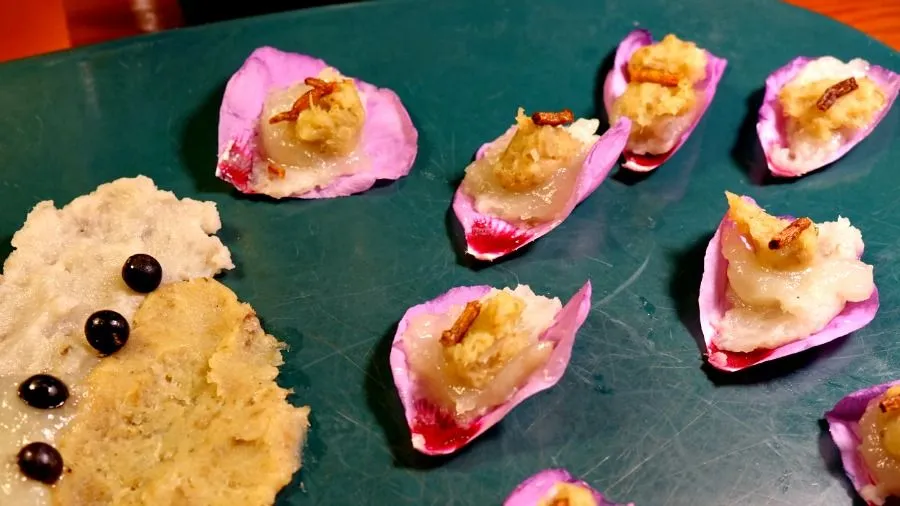
Getting It All Together
The partners in this melange a trois are three roots that really go well together. The center of attention is the featured ingredient of this round of the Steemit Iron Chef contest -- Carrots. But not just any carrot. It's the Wild Carrot, also called Queen Anne's Lace. It's the exact same species of plant (Daucus carota) that has been domesticated into all the carrots we grow in gardens or buy from the store. But the wild carrot is a common weed!
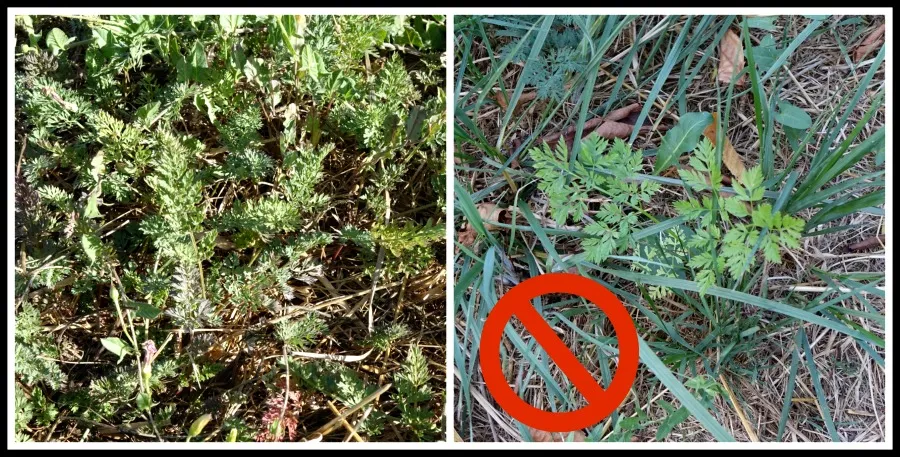
The other two companions often escape from gardens and take up a feral existence - the Jerusalem artichoke or Sunchoke, and Elephant Garlic. These three roots go so well together. I used them in a primitive melange a trois in when I made Fire-Roasted Wild Roots for the Steemit Culinary Challenge. But that was in the early spring when root crops are still in wonderful shape, full and sweet!
So the challenge for this threesome to be enjoyable was being able to find roots in good shape, especially for the Wild Carrot. When they flower in their second year, wild carrot roots become emaciated, so they aren't good for eating. I headed out with a shovel and gathered plenty of all three roots. Yay!
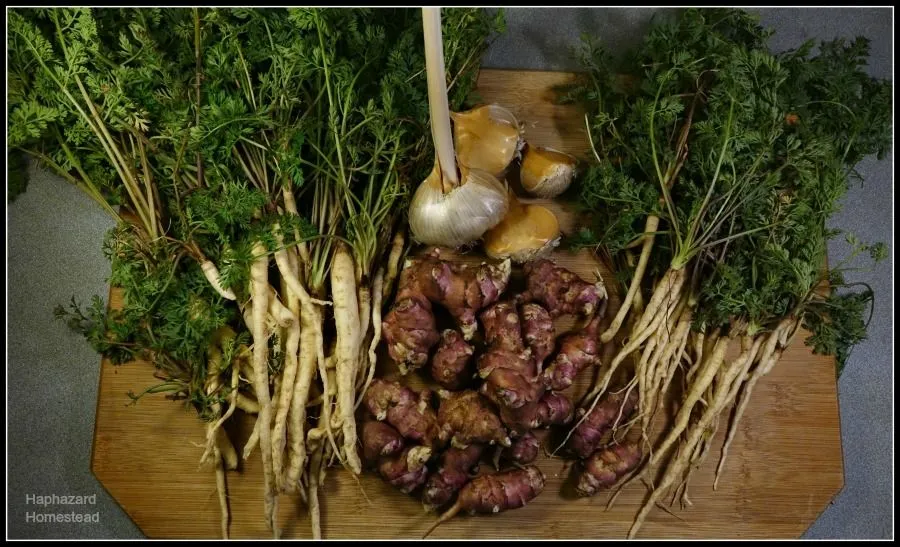
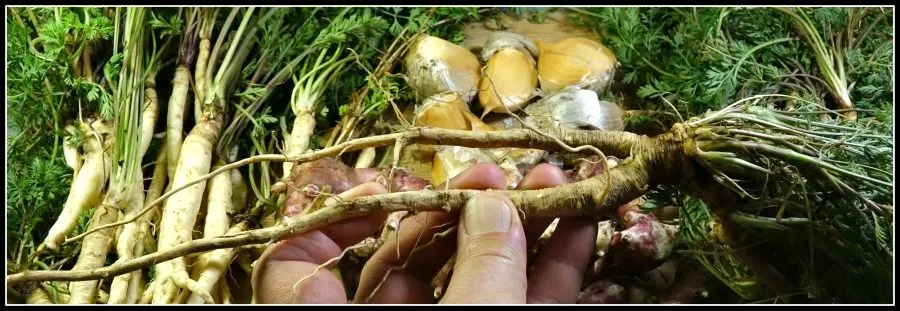
Getting Ready
I cleaned the roots and put them in a roasting pan, and then in a 300F oven. I drizzled on a little olive oil and salt and pepper. The roots cook at different rates. The Jerusalem artichokes finish first, then the Elephant Garlic. It gets soft as butter!
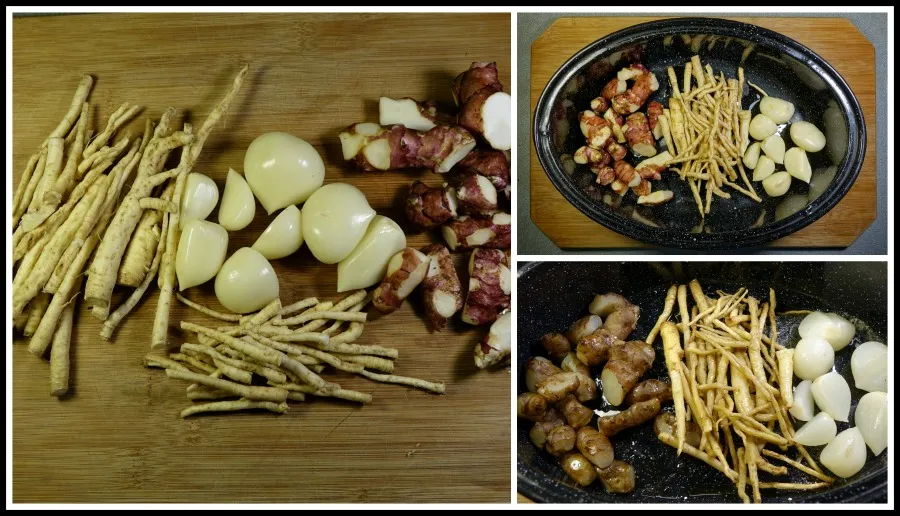
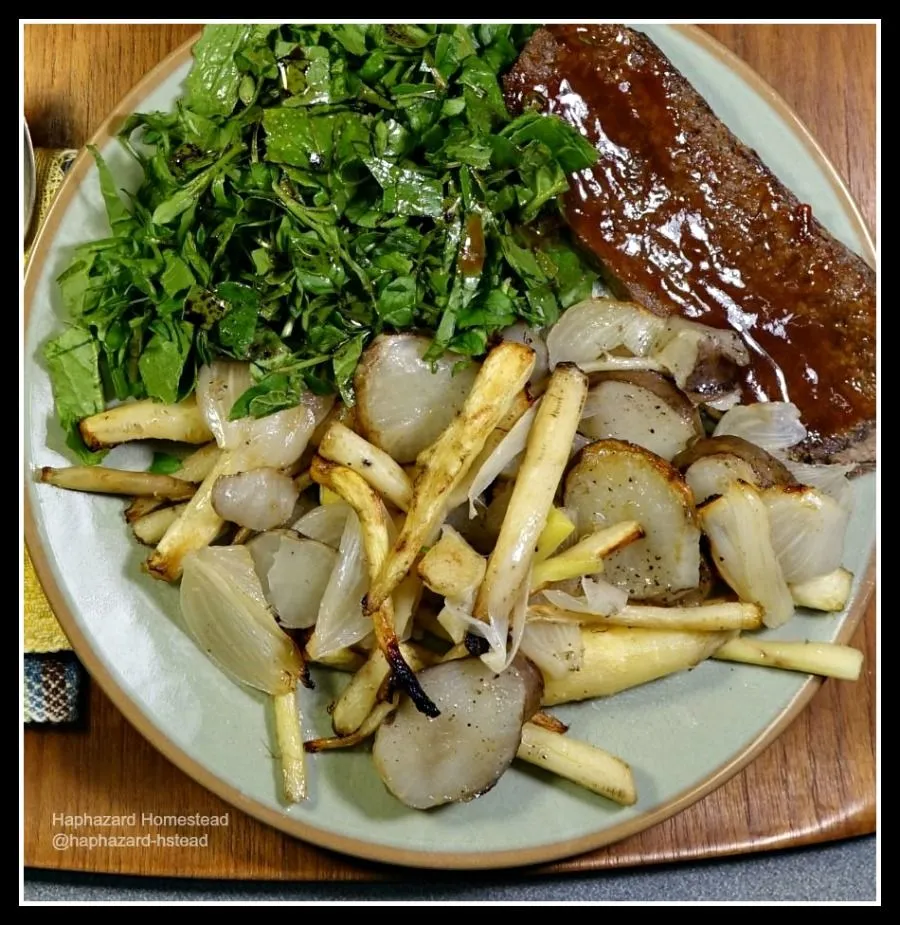
But @progressive-chef challenges us to "elevate" our dish. So as each root was roasted until it was super tender, I mashed it or put it through a strainer, to make a puree. But all three roots are sort of white and they don't look so attractive sitting side by side. So I brought in some pretty plants. Rose of Sharon flower petals are always pretty. And I found a ripe few Black Nightshade berries. You can see another way I use Black Nightshade berries in my 100% Free Homestead Smoothie.
Enjoying the Melange!
I made a starter plate by putting a dab of each pureed root on a Rose of Sharon flower petal. I added a crispy carrot root on top. I put a swipe of each root puree, separately on the plate, so you can see what each looks like. The roots are divided by the Black Nightshade berries. Can you tell which is the Wild Carrot puree?

This is a great starter for a meal. The taste of the wild carrots really shines through, and goes well with the smoky flavor of the Jerusalem artichokes and sweet leek/garlic flavor of the Elephant Garlic. Ingredients: Wild Carrots, jerusalem Artichokes, Elephant Garlic, olive oil, Rose of Sharon flower petals, Black Nightshade berries. Thanks, Homestead!
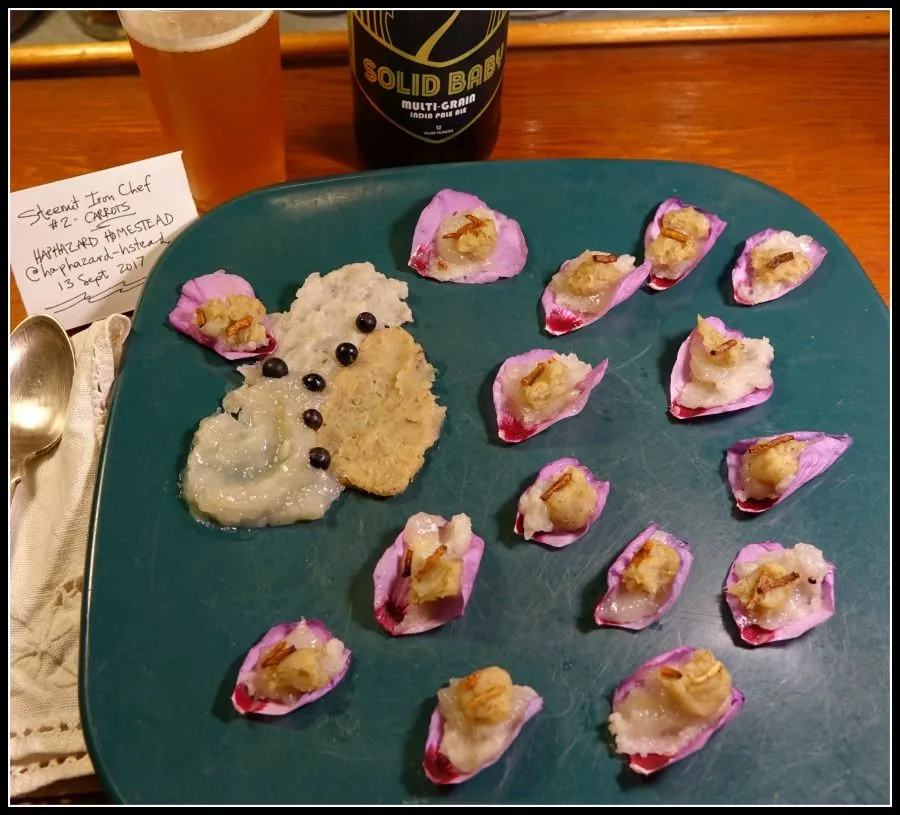
What Do You Think?
I hope you have a chance to try Wild Carrot roots sometime. It's amazing how good they are when they are roasted!
- Do you have Wild Carrots in your area?
- Can you tell the difference between Wild Carrots and Poison Hemlock?
- Would you try my Wild Carrot Melange a Trois?
I write about foraging because I believe that we can all have lives that are richer, more secure, more grounded, and more interesting by getting to know the plants and the land around us – in our yards, our parks, and our wilderness.
I would like Steemit to be the premier site for Foraging on the Internet! If you have any thoughts about foraging, or experiences to share, write a post and be sure to use the Foraging tag. And check out the @foraging-trail to see curated quality posts about foraging. Happy Foraging!
Thanks @progressivechef for creating the Steemit Iron Chef contest series.
Plant List
Wild Carrot or Queen Anne's Lace - Daucus carota
Poison Hemlock - Conium maculatum - HIGHLY TOXIC! DO NOT EAT!
Jerusalem artichokes - Helianthus tuberosus
Elephant Garlic - Allium ampeloprasum
Black nightshade - Solanum nigrum - ripe, black fruit
Rose of Sharon - Hibiscus syriacus - flower petals
** Haphazard Homestead **
